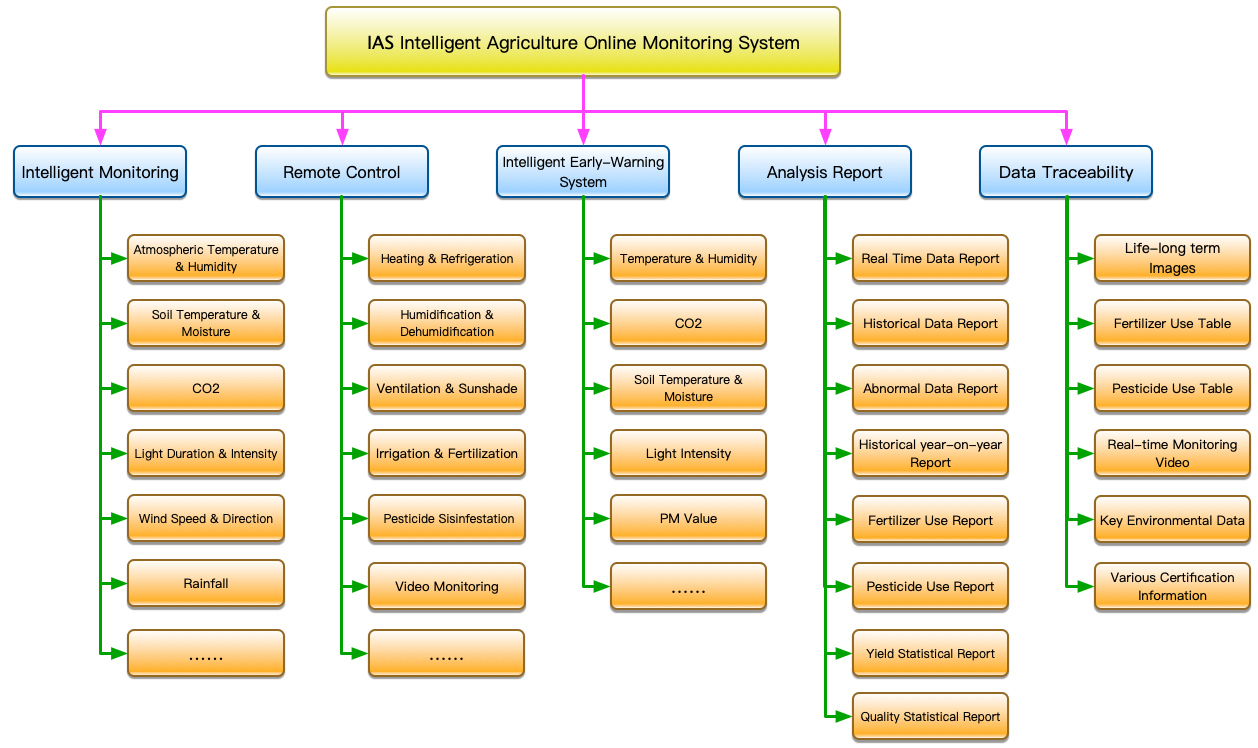Ninghai Greenhouse Planting Case

Project plan overview:
For large-scale greenhouse planting, artificial management requires a lot of manpower, which is labor-consuming and time-consuming, and there are unavoidable manual errors. The MicroEnergy Link Technology’s intelligent agricultural monitoring system collects real-time environmental data such as air temperature and humidity, soil moisture, soil temperature, carbon dioxide, light intensity, air pressure, etc. in the greenhouse and transmits them to the control center. The center platform system compares the latest monitoring data with the pre-set environmental parameters suitable for crop growth, such as the data monitored by the sensor and the pre-set number. If there is a deviation in the value, it will automatically send out a command to intelligently start the ventilator, sunshade, humidification, watering and other equipment connected with the system to work, and relevant equipment will not stop working until the environmental data in the shed reaches the pre-set data range of the system.
The MicroEnergy Link Technology’s intelligent agricultural monitoring system adopts the Internet of things technology to realize the automation of agricultural production and intelligent management. Through computers and mobile phones, it can realize the intelligent temperature regulation and fine fertilization of greenhouse planting management, which can achieve the purpose of improving output, quality, saving manpower, reducing artificial error and improving economic efficiency, and realize the efficient and accurate management of greenhouse planting.

System Internet of Things Architecture

System Functions and Features
Economic benefits of system installation:
1. Reduce irrigation cost
IAS intelligent agricultural monitoring system can change the way of flood irrigation in the past, adopt the high-efficiency drip irrigation mode under the combination of soil moisture sensor, which can save about 40-60% of water resources for irrigation, and will play a huge role in promoting the rational use of rural natural resources and environmental protection.
2. Reduce the cost of fertilization
According to the calculation of mathematical model, with the cooperation of expert knowledge system and sensor data, variable rate fertilization can reduce the cost of fertilization by about 30%.
3. Reduce the cost of pest control
According to the mathematical model, the cost of pest control will be reduced by about 25% with the help of sensors and viriable spraying technology based on space.
4. Labor cost reduction
In the case of constant labor content, the reduction of labor cost directly corresponds to the reduction of labor intensity of farmers. According to the calculation, due to the use of 3D visual central control system and artificial intelligence expert system, the planting efficiency of farmers will be 1.5 times of the original, that is, 2.25 greenhouses / person / year. If the planting area does not increase and farmers still plant 1.5 greenhouses, the labor intensity of farmers will be reduced by 33%.
5. Establish database of crop growth, improve quality and yield
The whole system collects basic data for crops every 10 minutes. Through the data mining technology, combined with the data analysis of agricultural experts, we can simulate the best growth environment of each crop, which is of strategic significance for crop planting. Accurate operation, improve quality and output.
6. Change the status quo of relying on nature to reduce the losses caused by natural disasters
Online real-time monitoring, early warning.
7. Provide basis for traceability of agricultural products, improve the value of agricultural products, and create high-end brands.
Ninghai green castle installation case:

Installation and configuration of each greenhouse



